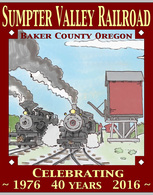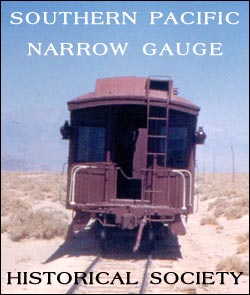

Oswego Iron Company / Oregon Iron and Steel Company.
By Greg MaxwellEarly Developments
In 1861 deposits of brown hematite iron ore were discovered in the hills south of Portland. In March 1865, Portland banker, William Sargent Ladd and others formed the Oregon Iron Company. The company constructed an iron furnace on the west bank of the Willamette River at the mouth of Sucker Creek. The furnace began operating in August 1867; casting the first iron pigs produced west of the Rocky Mountains on August 24th. All smelting was accomplished with locally sourced charcoal, burned in remote pits from the surrounding forests. Ore from the company’s mine was transported by wagon over several miles of steep, twisting and often muddy road. The limestone used for flux at the furnace had to be brought from the San Juan Islands by sailing ship. Under these primitive conditions, the company struggled to produce ten tons of pig-iron per day, when the furnace was in operation.
The Oswego Iron Company and its RailroadThe Oregon Iron Company was dogged by financial and legal problems and eventually failed in 1877. The company’s properties were sold at a sheriff’s auction on September 10, 1877. The winning bid came from a group of Ohio capitalists. The new owners reorganized the company as the Oswego Iron Company and restarted the furnace in May 1878. In an effort to increase production and lower costs, the company proposed building a three foot gauge railroad to connect the Oswego furnace and the Prosser Iron Mine. Engineer C.W. Burrage laid out the 2.6 mile rail line and grading commenced in March 1880. The necessary rails and fittings, along with six ore cars were procured from San Francisco. The “W.S. Ladd”, a 10 ton Baldwin 0-4-2, arrived at Portland aboard the steam ship, Elder. The iron company’s new locomotive was delivered in the last week of May and the railroad began moving ore in June. The railroad, along with improvements to the furnace, allowed the smelter to double its output. Another major innovation was centralizing the production of charcoal at Oswego using bee-hive ovens. The initial battery consisted of 30 ovens. The number of ovens was increased to 55 over time. Despite the advancements made by the Oswego Iron Company, the cost of their product, about $50 a ton, was generally more than the Pacific Coast market could bear.
The Oregon Iron and Steel CompanyIn 1882 the Oswego Iron Company and its railroad were acquired by a group of investors headed by Simeon G. Reed. Reed reorganized as the Oregon Iron and Steel Company, capitalized at $3,000,000. Reed had planned to construct a rolling mill and build iron ships at Portland for the Oregon Steam Navigation Company; which he owned in a partnership with Henry Villard. This scheme died with the failure of Villard’s Oregon and Transcontinental Company in 1883. The Oregon and Transcontinental Company held a large stake in the Oregon Iron and Steel Company; leaving the iron company deeply mired in the legal mess that followed its collapse. The furnace closed down in November 1883 putting 500 men out of work.
Buoyed by a contract with the City of Portland to provide 1,887 tons of iron pipes for the city’s Bull Run water project, S.G. Reed managed to recapitalize the Oregon Iron and Steel Company in October 1887. In 1888, an ambitious expansion of the enterprise was begun. The old furnace was abandoned and a new modern iron furnace was built a half mile north of the old one. A cast iron pipe foundry was constructed at the mouth of Tryon Creek. The railroad was reequipped with 20 new iron ore cars, manufactured in Portland. A new 20 ton 0-6-2 tank engine was ordered from the Baldwin Locomotive Works to handle the heavier traffic.
Connection with the Portland & Willamette Valley RailroadThe expansion of the Oswego works coincided with the completion of the Portland & Willamette Railroad to Portland in July 1888. This made possible rail deliveries of limestone for the furnace and coke for the pipe plant as well as export of much of the manufactured product. The P&WV also entered into a contract with the OI&SCo to deliver 40,000 cords of wood from points along its line for the production of charcoal. The railroad and the iron company jointly extended spurs into the works; in all three miles of sidings were built. When the new furnace went into operation on October 21, 1888, the little “W.S. Ladd” was kept busy switching at the works. The larger tank engine, #2 worked on the line to the Prosser Mine. Two, ten car trains were shuttled between the mine and smelter. At its height, 600 men were employed by the company. A full half of that number, mostly Chinese, were engaged in cutting wood for charcoal.
The financial panic of 1893 caused a glut of pig iron on the market making the Oswego works uncompetitive. The furnace closed down in February 1894, never to reopen. The rail line to the mine was eventually taken up in 1910. The pipe plant resumed production in late 1894 using pig-iron imported from Alabama. In June-July 1893 a third rail was added to the Southern Pacific’s P&WV line, including the spurs into the O&ISCo’s works. When the SP removed the narrow gauge rails in 1895, the three rail track within the works was left in place. The iron company’s narrow gauge locomotives served out their years moving materials around the plant. When the pipe foundry finally closed in 1928, OI&SCo #2 was still on hand.
Mary Goodall, Oregon’s Iron Dream, Portland, OR: Binfords & Mort, 1958
(Portland) Oregonian, various issues
Oregon City Enterprise, Various issues
Evening Capital Journal, Various issues
Reference Material Available Online:
Maps.
Map of the Oregon Iron Company Railroad by Greg Maxwell.  657KB
657KB
Map of the Oregon Iron Company Railroad by Scott Gavin.  435KB
435KB
Equipment Rosters.
OICo/OI & SCo Locomotive Roster. Compiled by Greg Maxwell.  178KB
178KB
Photographs.
Collected Oswego Iron Company / Oregon Iron and Steel Company Photographs.
Images collected from private collections, libraries and historical societies.
Links.
The Oregon Iron Chronicles. The story of Oregon's pioneer iron industry in historic newspapers.
Oregon \ Oregon Iron and Steel Company


